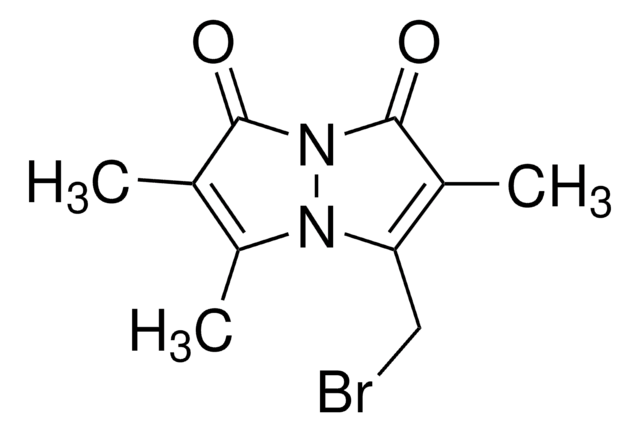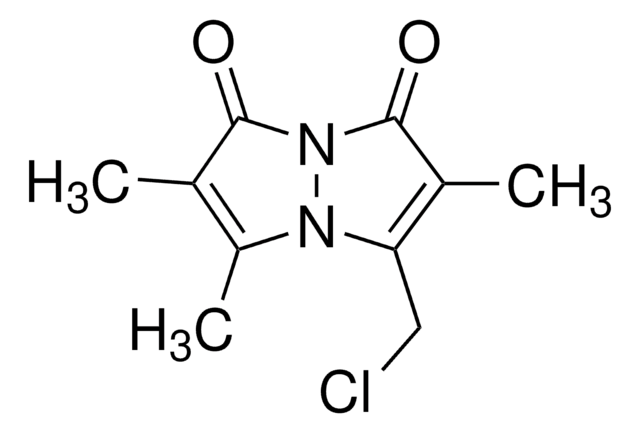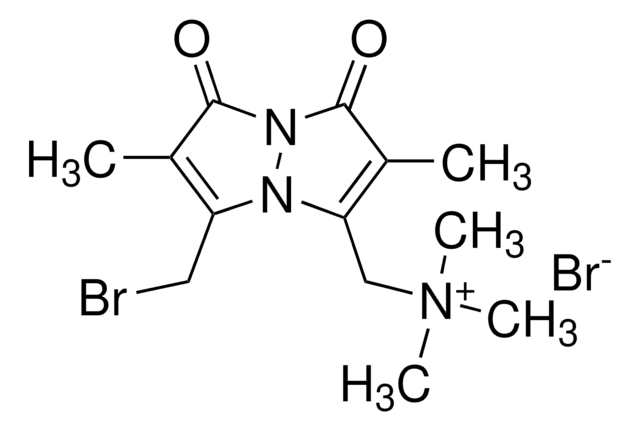B4380
Bromobimane
≥97% purity, powder
Sinonimo/i:
Monobromobimane
About This Item
Prodotti consigliati
Nome del prodotto
Bromobimane, ≥97% (HPLC)
Livello qualitativo
Saggio
≥97% (HPLC)
Stato
powder
Colore
yellow
Punto di fusione
161 °C
Solubilità
acetonitrile: 20 mg/mL
ε (coefficiente d’estinzione)
4.6-5.1 at 396-398 nm in H2O
applicazioni
diagnostic assay manufacturing
hematology
histology
Temperatura di conservazione
−20°C
Stringa SMILE
CC1=C(C)C(=O)N2N1C(CBr)=C(C)C2=O
InChI
1S/C10H11BrN2O2/c1-5-7(3)12-8(4-11)6(2)10(15)13(12)9(5)14/h4H2,1-3H3
AHEWZZJEDQVLOP-UHFFFAOYSA-N
Cerchi prodotti simili? Visita Guida al confronto tra prodotti
Descrizione generale
Applicazioni
Bromobimane has been used for the quantitative measurement of free hydrogen sulfide in vivo and in vitro. It has been used for the labeling of proteins containing thiol groups.
Azioni biochim/fisiol
Codice della classe di stoccaggio
11 - Combustible Solids
Classe di pericolosità dell'acqua (WGK)
WGK 3
Punto d’infiammabilità (°F)
Not applicable
Punto d’infiammabilità (°C)
Not applicable
Dispositivi di protezione individuale
Eyeshields, Gloves, type N95 (US)
Scegli una delle versioni più recenti:
Possiedi già questo prodotto?
I documenti relativi ai prodotti acquistati recentemente sono disponibili nell’Archivio dei documenti.
I clienti hanno visto anche
Il team dei nostri ricercatori vanta grande esperienza in tutte le aree della ricerca quali Life Science, scienza dei materiali, sintesi chimica, cromatografia, discipline analitiche, ecc..
Contatta l'Assistenza Tecnica.









